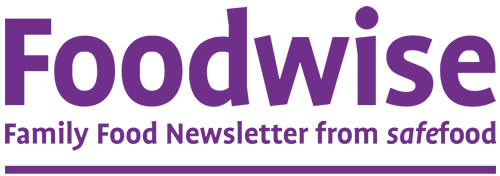North/South Ireland Food Consumption Survey

- Project start date: 1 January 2000
- Project status: Completed
- Project type: Nutrition
- Discipline: Nutrition surveillance
- Author/s: Safefood
- Collaborator/s: Irish Universities Nutrition Alliance (IUNA)
Research objective
To establish in a representative sample of adults aged 18 to 64 years on the island of Ireland a database of:
- Habitual food and beverage consumption
- Height, weight, body fat content and distribution
- Habitual physical activity levels
- Lifestyle characteristics, including smoking habits
- Attitudes to food and health socio-demographic characteristics
To apply this database to investigate:
- Food and nutrient intakes in relation to nutritional adequacy and excess and compliance with current dietary guidelines
- Body weight, body fat content and distribution, habitual physical activity levels, lifestyle and socio-demographic characteristics, and attitudes in relation to food and health
In addition the survey design and the database structure were selected with a view to facilitate its use for a number of other key purposes, including:
- Risk assessment for exposure to chemical and biological hazards in the food supply
- The development of quantitative and qualitative food based dietary guidelines for healthy eating
- Estimation of current nutrient intakes, and modelling of potential future nutrient intakes from fortified foods and nutritional supplements
- To provide scientific data to underpin food product development and promotion
Outputs
Research report
- Title: North/South Ireland Food Consumption Survey
- Date: 6 February 2001
- Summary: This Summary Report describes the methods used and the main findings with regard to food and beverage consumption, nutrient intakes, and anthropometric, physical activity and attitudinal data from the North/South Ireland Food Consumption Survey (NSIFCS).
- Findings:
- Foods and beverages: Overall, the 18–64-year-old population of Ireland, consumed a wide variety of foods and beverages. Potatoes, bread and dairy products were consumed by almost everybody. Tea was the most common beverage, drunk by 91% of adults. Meats, breads, potatoes, dairy products and biscuits/cakes provided almost 60% of energy. 24% of food and drink energy was consumed outside the home. Younger adults obtained twice as much energy from food and drink consumed outside the home as adults aged 51-64 years.
- Alcohol: 80% of respondents were alcohol consumers. Younger adults were more likely to consume alcohol, and in larger quantities, than older adults. 36% of men and 20% of women reported consuming greater quantities than the recommended maximum weekly intakes.
- Energy and macronutrients: Five food groups including meats, breads, potatoes, dairy products and biscuits/cakes provided 59% of energy. Protein intakes were more than adequate in most people. Meats, dairy products and breads provided two thirds of the protein consumed. Mean daily fat intakes in men and women were higher, and mean carbohydrate intakes were lower than current dietary recommendations.
- Dietary fibre: Men had higher intakes of fibre than women did but women consumed more fibre-dense diets than men. Breads, potatoes and vegetables provided two-thirds of the fibre consumed. The mean daily fibre intake was below the minimum of the recommended range in almost half of women and one quarter of men.
- Micronutrients: Intakes of most vitamins were adequate in the population. Important sources of vitamins and minerals were dairy products, meats, vegetables, potatoes, fish, eggs, fruit, breads and breakfast cereals. A substantial proportion of vitamin and mineral intakes was obtained from nutritional supplements in people who took supplements. There was a significant prevalence of inadequate intakes of calcium in women and of iron in women of reproductive age. Few women of reproductive age achieved the folate intake. A substantial proportion of the population had low vitamin D intakes and was largely dependent on sunlight to maintain adequate vitamin D status.
- Obesity: 18% of the population were obese and 39% were overweight. Since 1990, the prevalence of obesity has increased by 67% overall, up 1.25- fold in women and up 2.5-fold in men. The increase in the prevalence of obesity has significant health implications. The data predict that an epidemic of adult-onset diabetes will face the health service sector in the not-too-distant future.
- Physical activity: Overall, physical activity levels were low, particularly in women. Walking was the most important recreational activity in 41% of men and 60% of women. Watching TV monopolised a major portion of available leisure time for men and women of all ages. When questioned about their levels of recreational activity, most people considered that they should be more active.
- Smoking: Approximately 33% of men and 32% of women were current smokers and 28% of men and 25% of women smoked daily. The incidence of smoking decreased with increasing age. 41% of men and 42% of women in the 18-35y category were smokers, compared to 27% of men and 17% of women in the 51-64y category.




